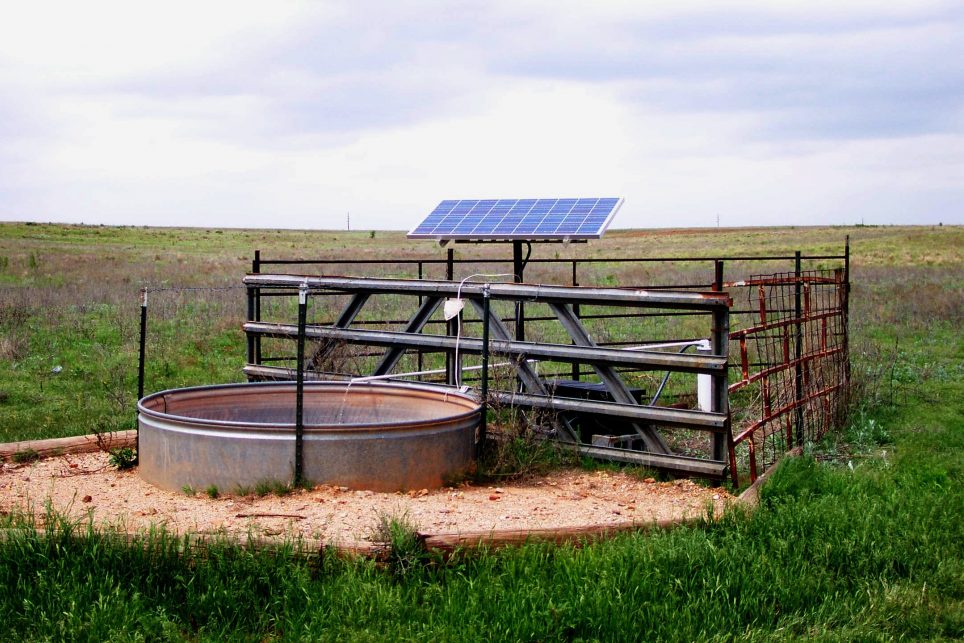
Iowa State University conducted a study on Midwestern climate conditions over the period of five summers and four winters. The university observed that the yearling feedlot cattle placed in an open pasture consumed more water in the summer than in the winter by nearly 35%. The greatest water consumption times in the summer were between 12:00-3:00 p.m. and between 3:00-6:00 p.m. in the winter.
When the long hot days of summer are upon us, and the sun is beating down on the cattle, the sun is also providing extended hours of pumping water for the cattle with solar pumps. More solar power always equates to more daily water production, even if it does not mean more gallons per minute in bright sunlight. At times a solar pump may be able to function quite nicely on 100 watts of power in bright sunlight, but 200 watts will make the pump start earlier in the morning and run later in the evening and make the pump produce more water in low light and cloudy situations.
In the winter, solar pumps typically work well as long as precautions are in place for freezing weather conditions. There must be a weep hole in the vertical pipe so that water can drain below the frost level when the pump shuts off at night or during low light conditions. It is a must that the pipe delivering the water to the tank is at an angle that it drains the water completely and does not have any loops or low places so the water cannot freeze and create an ice plug.
The solar powered water pumps work perfectly because when water consumption for the cattle is at its highest point, the solar powered pumps are producing their greatest water output. During the shorter days of winter, their is less water production from the solar pumps, but this is when the cattle drink considerably less. The solar powered pumping system perfectly meets the demand according to the weather conditions for the cattle.